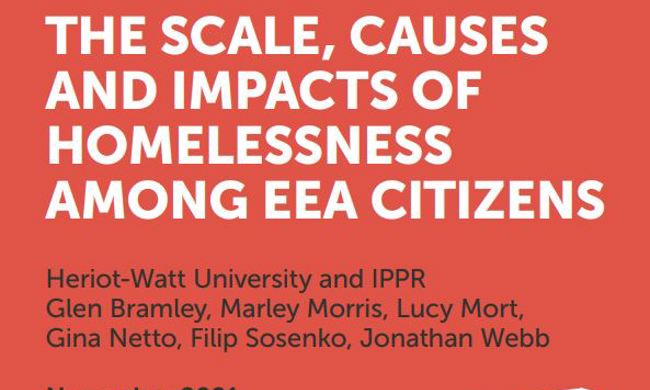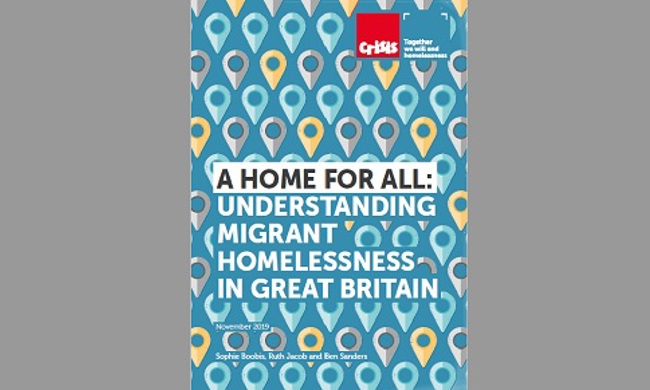Types of homelessness
Rough sleeping is the most visible form of homelessness but there are a wide range of situations that are also described as homelessness.
Understanding each type of homelessness leads to better support and a better view of homelessness as a whole. Building a picture of the number of people who are homeless is complicated. This is due to the different ways each type is counted and the limitations of each approach.
Rough sleeping
There were an estimated 3,069 people sleeping rough in England on a single night in the Autumn of 2022. This was up by 26% on 2021. (source: Rough Sleepers Statistics Autumn 2022, England).
The full picture of rough sleeping across the UK is unknown. While the Rough Sleeping Count gives an estimated snapshot of rough sleeping. The UK Statistics Authority was highly critical of these statistics, stating that they did not meet the required standards to be designated as ‘National Statistics’.
The London based CHAIN database currently provides the most robust and comprehensive statistics on rough sleeping. This data shows that the number of people having no choice but to sleep rough in London in 21/22 was 8,329, of which 61% were seen sleeping rough for the first time.
There were an estimated 135 individuals sleeping rough throughout Wales at the end of March 2023 (source: Homelessness accommodation provision and rough sleeping: March 2023 | Welsh Government).
In temporary accommodation
At the end of September 2022, there were 121,950 families and individuals in Great Britain who were staying in temporary accommodation provided by their local council because they didn’t have their own home. (sources: DLUHC, Scottish Government, Welsh Government)
The length of time people can stay in temporary accommodation can range from a single night to many years. There are a number of different types of temporary accommodation:
- night/winter shelters
- hostels
- B&Bs
- women’s refuges
- private and social housing
Each type of temporary accommodation has its own rules on access and lengths of stay and may not always be appropriate for the individuals staying in them.
Hidden homelessness
62% of respondents were hidden homeless on the day they were surveyed and 92% had experienced hidden homelessness (source: The hidden truth about homelessness, 2011).
Those who experience hidden homelessness are hidden from statistics and services as they are dealing with their situation informally. This means staying with family and friends, sofa surfing, living in unsuitable housing such as squats or in ‘beds in shed’ situations (The Homelessness Monitor: England 2018). All these situations leave the person extremely vulnerable. The majority of the hidden homeless will have slept rough at some time.
Statutory homeless
278,110 families and individuals were accepted as being owed support by their local council because they were likely to become homeless or were homeless in 2021/22.
For 19,790 people, the main reason they needed support to try to prevent their homelessness was due to them being issued a Section 21 eviction notice by their landlord. This means they had to leave the property due to no fault of their own. (Statutory Homelessness Annual Report 21-22, DLUHC)
Crisis research
‘Barely breaking even’: the experiences and impact of in-work homelessness across Britain
Based on an online survey of 250 employers, as well as digital ethnography and interviews with 34...

The scale, causes, and impacts of homelessness among EEA Citizens
Over the past decade, the scale of homelessness and housing difficulties among EEA citizens acros...
Research about losing your home
We want to better understand the experience of losing your home in England, Scotland and Wales
It was like a nightmare – the reality of sofa surfing in Britain today
Based on face-to-face interviews with 114 people with current or recent experience of sofa surfin...

A Home For All: Understanding Migrant Homelessness in Great Britain
This report presents the findings of Crisis scoping research looking at the different experiences of homelessness that migrants face across Britain.
Number of rough sleepers in England soars by 165% since 2010
Today the Government has released its 2018 rough sleeping count figures for England. Based on the count or estimate from each local authority, the figures show that 4,677 people slept rough on a single given night in Autumn 2018.
Research from other sources
Department for Communities and Local Government
Department for Communities and Local Govenment
